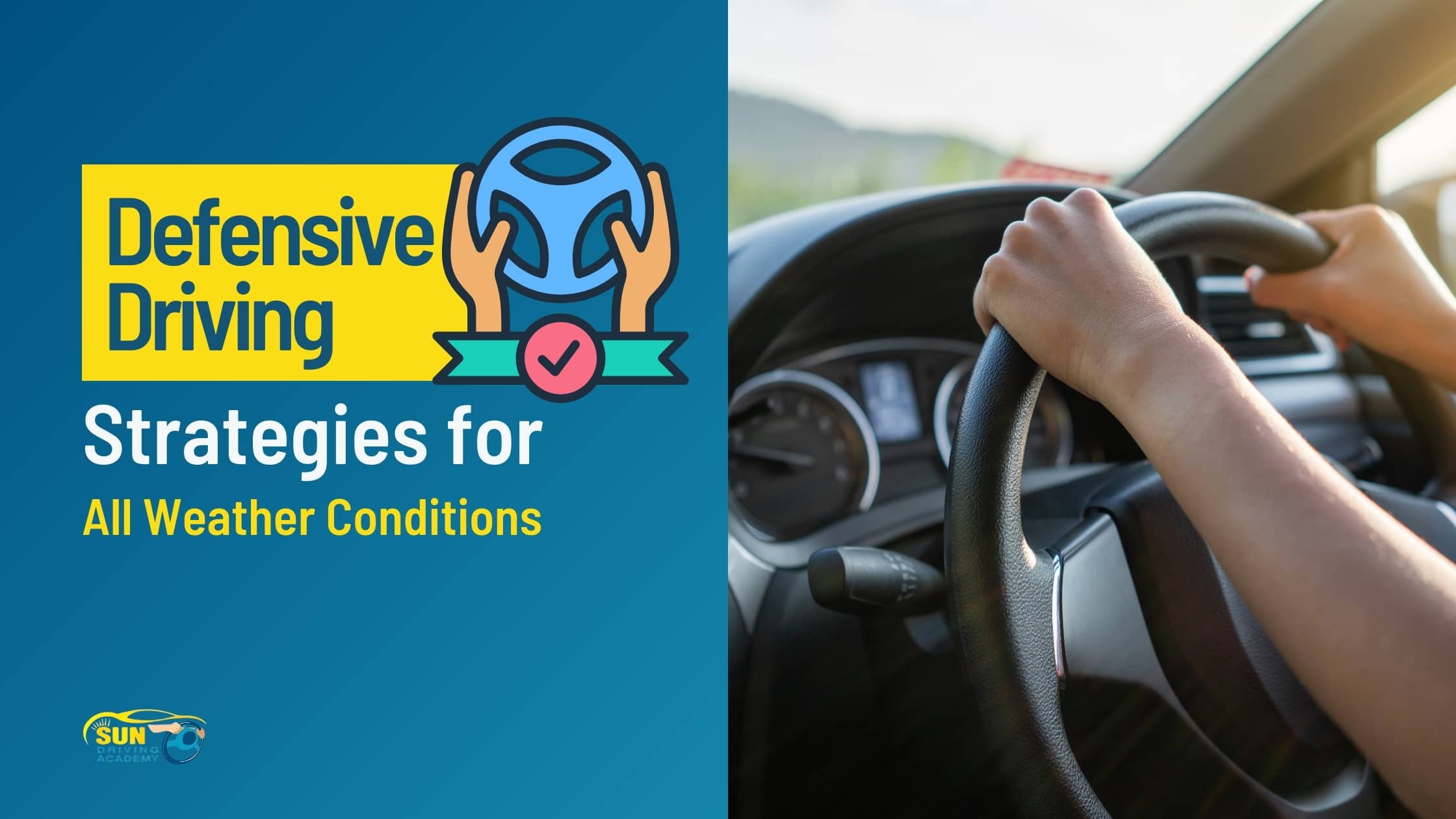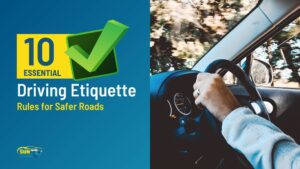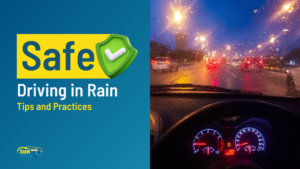Driving requires attention, skill, and awareness of road conditions. Weather affects driving safety, so drivers must be ready for any situation. Defensive driving helps drivers anticipate and respond to dangers, especially in bad weather. This article gives defensive driving tips for rain, fog, snow, wind, sun, and night driving. Learn these techniques to drive safely in any weather.
Understanding Defensive Driving
Defensive driving means being aware of dangers on the road and taking action to stay safe. It involves predicting what other drivers might do and being ready to respond. Defensive driving is more than just obeying traffic laws; it’s about being careful and making choices that keep everyone safe.
Importance in Different Weather Conditions
Various weather conditions create different challenges for driving safely. Rain reduces traction and visibility, fog blocks your view of the road, snow and ice make it hard to control your vehicle, and wind can make your car swerve. By learning how to adjust your driving for each type of weather, you can lower the chance of accidents and stay safe on the road.
Preparing Your Vehicle for All Weather Conditions
Before you drive, make sure your car can handle various weather. Regular maintenance and checks can improve safety and your driving experience.
Essential Checks
- Tires: Check your tires to make sure they have enough tread and are filled with the right amount of air. Old tires can make it harder for your car to grip the road, especially when it’s wet or icy.
- Brakes: Regularly check your brakes to make sure they work well.
- Lights: Check that all lights, like headlights, brake lights, and turn signals, are working. Good lighting is important for seeing well in bad weather.
- Wipers: Replace your windshield wipers often to see clearly when it rains or snows.
- Fluids: Make sure to keep your vehicle’s fluids filled up, like windshield washer fluid, engine oil, and antifreeze.
Defensive Driving in Rainy Conditions
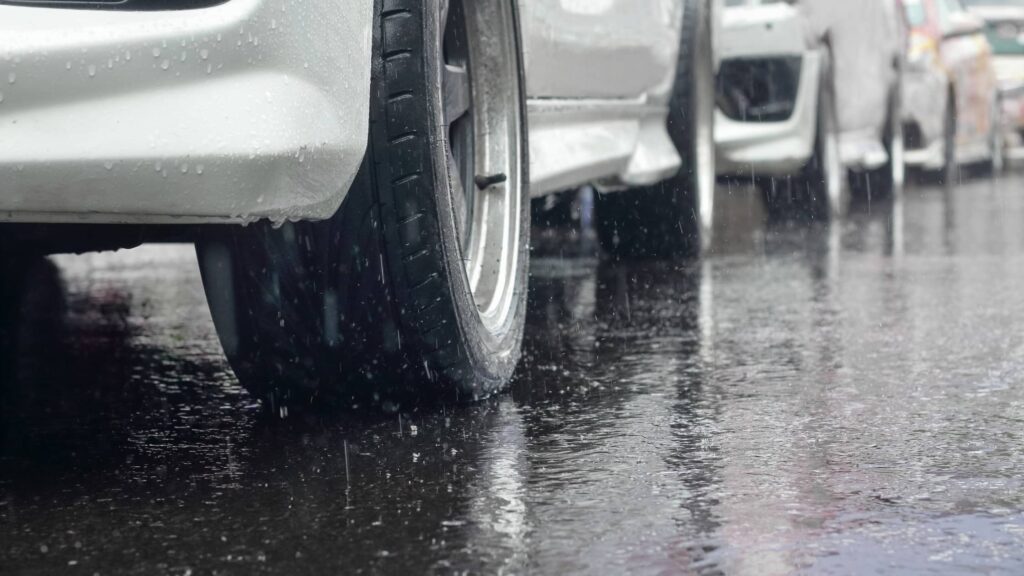
Driving in the rain is hard because the roads are slippery and it’s difficult to see. Rain makes the roads slick, which can cause skidding or hydroplaning.
Techniques for Maintaining Control
- Slow Down: Slow down to have more time to react quickly to unexpected changes in traffic or road conditions.
- Increase Following Distance: Keep a bigger space between your car and the one in front. Wet roads make it take longer to stop.
- Avoid Hydroplaning: Hydroplaning happens when your tires lose grip on the road and slide on water. If you start to hydroplane, lift your foot off the gas and steer straight until you regain control.
- Use Headlights: Turn on your headlights so other drivers can see you better.
Navigating Roads in Foggy Weather
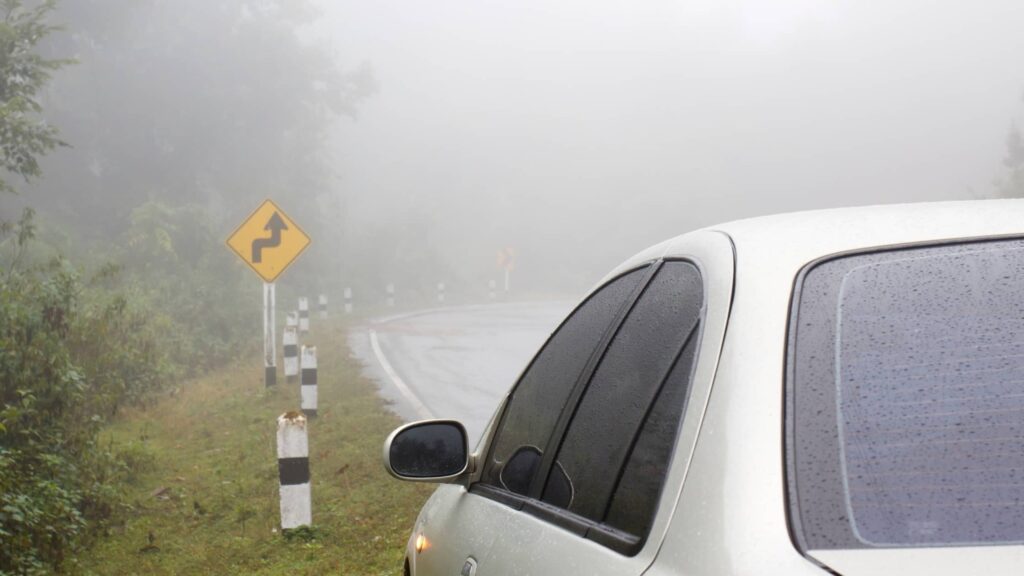
Fog makes it hard to see other cars, signs, and dangers on the road.
Using Car Lights Correctly
- Fog Lights: If your car has fog lights, turn them on with your low beams to see better in fog. Fog lights help you see through fog.
- Low Beams: Use low beam headlights in fog to see better, as high beams can make it harder to see.
- Road Markings: Use the white lines on the road to help you drive. Don’t look at the lights of the car in front of you, as it can make you confused.
- Patience and Caution: Slow down and stay calm. Give yourself more time to get to where you’re going.
Handling Snow and Ice
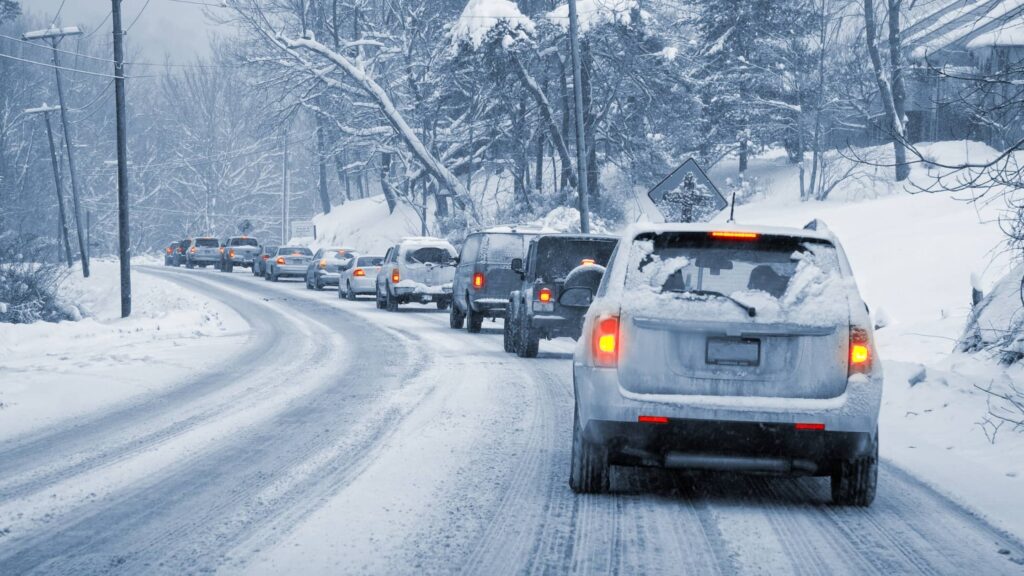
Winter weather can make driving dangerous. Snow and ice make it hard to control your car.
Essentials of Smooth Steering and Braking
- Smooth Inputs: To stay in control on slippery roads, make gentle and consistent movements with the steering wheel, accelerator, and brakes.
- Anti-lock Braking System (ABS): If your car has ABS, press the brakes steadily and let the system stop the wheels from locking up.
Tips for Dealing with Skids
- Steer into the Skid: If your car skids, steer where you want it to go to regain control.
- Avoid Overcorrection: Make small, gentle turns to steer in the right direction. Turning too much can worsen the skid.
Driving Strategies for Windy Conditions
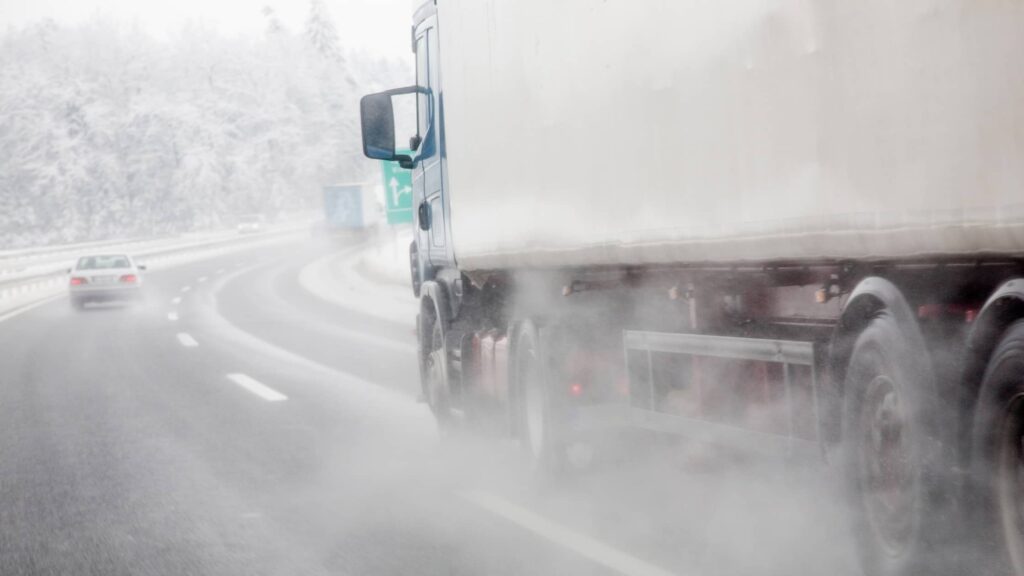
Strong winds are very dangerous, especially on open roads or bridges. They can push your vehicle off course and make it hard to control.
Handling Gusts of Wind
- Firm Grip: Hold the steering wheel with both hands to control your vehicle.
- Speed Adjustments: Reduce the effect of sudden gusts of wind by slowing down.
- Be Aware of Larger Vehicles: Trucks and buses may sway into your lane due to wind. Give them extra space.
Defensive Techniques for Sunny and Hot Weather
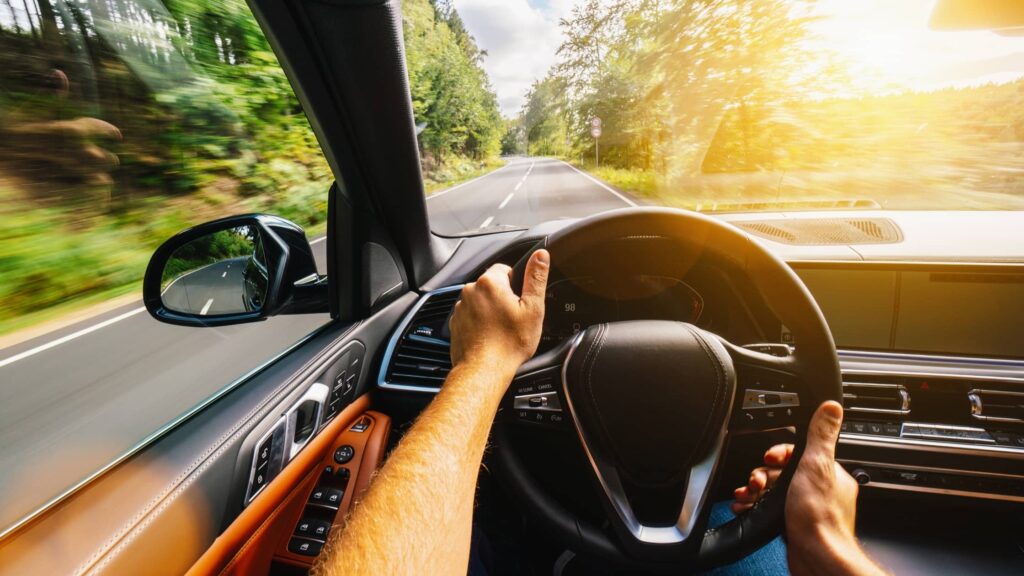
Sunny weather can make driving difficult because of glare and heat.
Overcoming Glare
- Use Sunglasses: Polarized sunglasses reduce glare and make it easier to see.
- Sun Visors: Use your car’s sun visors to block the sun.
Effects of Heat on Road Surfaces and Tires
- Tire Pressure: Regularly check your tire pressure because heat can make it go up. Properly inflated tires are very important for safe driving.
- Road Conditions: Hot weather can make asphalt soft, causing ruts and possibly affecting how your vehicle drives.
Night Driving Tips for All Weather Conditions
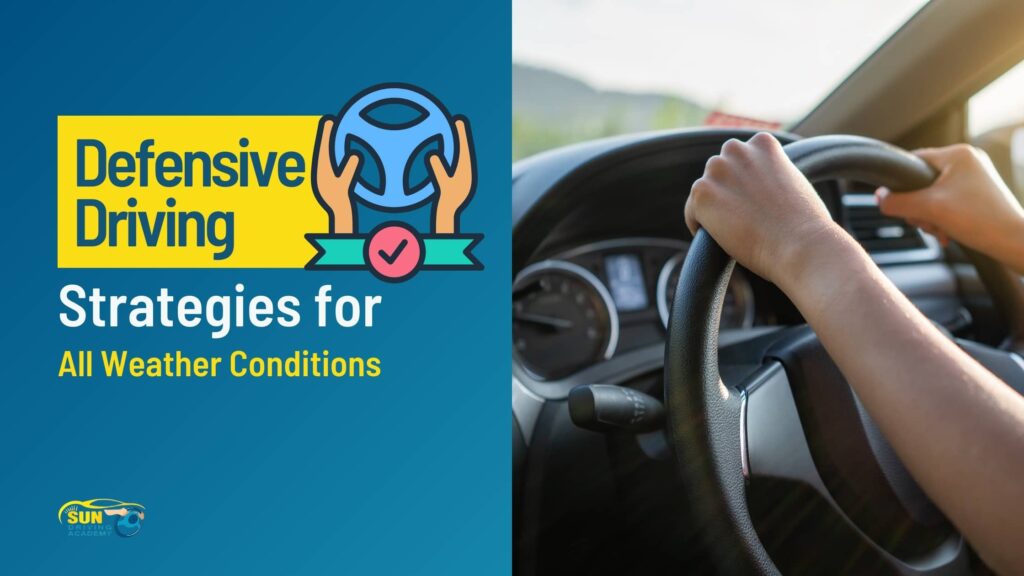
Driving at night requires extra caution, especially in bad weather. Reduced visibility and increased fatigue can make night driving more challenging.
Adjustments for Night Driving
- Headlights: Use high beams only when no cars are coming towards you. Switch to low beams when driving behind another car or in fog.
- Clean Windows: Clean your windshield and windows to see better and prevent glare.
- Reduce Speed: Slow down and take more time to react to possible dangers.
Emergency Situations: What to Do When Weather Overwhelms
Sometimes, even with precautions, the weather can get too extreme. Knowing what to do in these situations can save lives.
Guidelines for Pulling Over Safely
- Find a Safe Spot: Find a place to stop safely, like a rest area, parking lot, or wide shoulder.
- Stay in the Car: It’s safer to stay in your vehicle until the weather gets better. Keep your seatbelt on and turn on your hazard lights.
Creating an Emergency Kit
- Basic Supplies: Pack water, non-perishable food, a flashlight, and a first aid kit.
- Weather-specific Items: In winter, bring blankets, an ice scraper, and warm clothes. In summer, bring extra water and sunscreen.
Key Takeaways
Defensive driving means being ready and taking action, especially in bad weather. Here are the main strategies for different weather conditions:
- Rain: Slow down, increase following distance, avoid hydroplaning, use headlights.
- Fog: Use low beams and fog lights, rely on road markings, reduce speed.
- Snow and Ice: Smooth steering and braking, use ABS, steer into skids.
- Wind: Keep a firm grip on the wheel, slow down, give larger vehicles extra space.
- Sun and Heat: Overcome glare with sunglasses and sun visors, monitor tire pressure.
- Night: Use headlights appropriately, keep windows clean, reduce speed.
To be a better defensive driver, keep learning and practicing regularly. Stay updated on new techniques to stay safe while driving.
FAQs
What is the most important thing to remember when driving in the rain?
Remember to slow down and increase your following distance. Wet roads can double your stopping distance, making it harder to avoid accidents.
How can I improve my visibility when driving in fog?
Use low beam headlights or fog lights if your car has them. Rely on road markings to guide your driving. Avoid using high beams because they can reflect off the fog and make it harder to see.
What should I do if my car starts to skid on ice?
If your car skids, steer where you want the front to go. Avoid overcorrecting and keep your movements smooth to regain control.
How can I protect myself from glare when driving in bright sunlight?
Wear polarized sunglasses and use your car’s sun visors to reduce glare. Keep your windshield clean to minimize sun glare.
What items should be included in a car emergency kit for winter weather?
Your emergency kit should have blankets, an ice scraper, warm clothes, water, non-perishable food, a flashlight, and a first aid kit.
Related Articles:
Road Rage: How to Stay Cool and Drive Safely
Driving in the Rain: Essential Safety Tips

